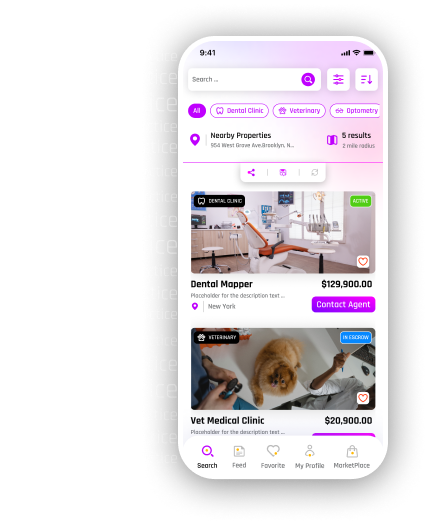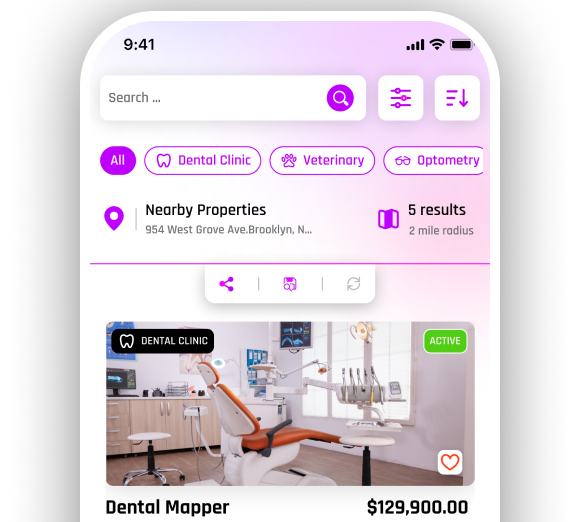The Role of Technology in Running a More Profitable Vet Practice

Running a veterinary practice today is about much more than providing excellent medical care. Clients expect convenience, seamless communication, and efficient service—standards that can only be achieved by embracing the right technology. From digital record-keeping to advanced diagnostic tools, technology has become a cornerstone of both patient outcomes and business growth. For practice owners exploring opportunities like a veterinary clinic for sale, the role of technology in profitability cannot be overstated. It’s not just about staying modern; it’s about creating a sustainable, thriving business model in an increasingly competitive field.
Importance of Technology in Veterinary Practices
Veterinary medicine has evolved dramatically, and clients now view technology as a marker of trust and professionalism. Practices that adopt modern tools often see improved efficiency, reduced costs, and stronger client loyalty. Let’s look at the key areas where technology drives profitability:
-
Electronic Medical Records (EMRs)
Digital records save time, reduce paperwork, and streamline workflows. They also make it easier for veterinarians to track patient history, share data with specialists, and provide more personalized care. Clients appreciate the ease of accessing information and reminders, which fosters trust and repeat visits. -
Telemedicine and Virtual Consultations
With telehealth gaining traction, veterinary practices can extend their reach. Pet owners often seek quick consultations for minor issues, which can be handled virtually. This adds a new revenue stream while reducing in-clinic congestion and making care more accessible. -
Client Communication Tools
Text reminders, mobile apps, and online booking platforms make it easy for clients to engage with a practice. This not only reduces missed appointments but also creates a smoother client experience—an essential factor for profitability. -
Cloud-Based Collaboration
Cloud platforms allow seamless sharing of records, lab results, and imaging between veterinarians, specialists, and even pet owners. This boosts transparency and efficiency while enabling practices to provide faster, higher-quality care. -
Data Security and Compliance Technology
Protecting sensitive patient and client data is crucial. Cybersecurity tools, encryption, and compliance software safeguard records while ensuring practices adhere to privacy regulations. This not only reduces liability risks but also builds client confidence in the professionalism of the clinic.
Leveraging Diagnostic and Treatment Technology
Advanced diagnostic tools are no longer a luxury; they’re a necessity for practices that want to stand out. Incorporating modern medical equipment helps improve accuracy, shorten treatment times, and elevate patient care—all of which directly contribute to profitability.
-
Imaging Technology (X-rays, Ultrasound, MRI)
High-quality imaging reduces diagnostic guesswork and helps veterinarians identify issues quickly. This boosts client confidence, as pet owners can see the problem and understand treatment recommendations more clearly. -
In-House Laboratory Equipment
On-site diagnostic tools eliminate long wait times for test results. This not only accelerates treatment but also encourages clients to invest in immediate care. Practices with in-house labs generate additional revenue from faster services. -
Surgical and Anesthesia Monitoring Equipment
Investing in advanced surgical technology improves outcomes and reduces risk. Clients are more likely to choose a clinic that demonstrates high safety standards, ensuring better patient retention and referrals. -
Advanced Treatment Modalities
Integrating laser therapy, hydrotherapy, or minimally invasive surgical tools can expand your service offerings. This attracts clients seeking specialized care, increasing revenue and differentiating your practice from competitors. -
Wearable Pet Health Devices
Tracking devices for pets—such as GPS collars or activity monitors—enable vets to monitor patient health remotely. This data allows for proactive care, enhances client engagement, and opens new consultation or service opportunities.
For owners considering a veterinary practice to buy, evaluating the technology and diagnostic capabilities of the clinic is crucial—it often directly impacts revenue and growth potential.
Enhancing Operational Efficiency with Business Tech
Profitability doesn’t just come from medical technology; it also stems from running the business side of a practice more effectively.
-
Practice Management Software (PMS)
PMS solutions integrate scheduling, billing, and patient management. Automating repetitive tasks saves staff time and minimizes errors. In the long run, this allows more appointments per day without overloading staff. -
Inventory Management Systems
Overstocking or understocking medical supplies cuts into profits. Smart inventory systems track usage patterns and reorder automatically, ensuring practices have what they need without tying up cash flow. -
Financial Tools and Analytics
Digital accounting platforms and dashboards give practice owners real-time insights into revenue, expenses, and profit margins. These analytics help identify inefficiencies and opportunities for growth. -
Employee Scheduling and Workflow Automation
Software tools for staff scheduling and task automation ensure your team is deployed efficiently. This reduces overtime costs, prevents burnout, and ensures smooth operations during peak hours. -
Customer Relationship Management (CRM) Systems
CRMs allow practices to track client interactions, manage follow-ups, and send targeted communications. Maintaining strong client relationships boosts loyalty, increases repeat visits, and enhances overall revenue. -
Automated Marketing and Appointment Reminders
Digital marketing platforms and automated reminders improve patient retention and attract new clients. Sending personalized messages or promotions increases engagement while reducing no-show rates, directly impacting profitability.
Owners investing in a private practice for sale should prioritize evaluating the financial and operational technology in place—because efficiency behind the scenes is just as important as patient-facing care.
Technology as a Driver of Client Experience
In the veterinary industry, client experience is a direct reflection of profitability. When clients feel that their pets are receiving superior care through advanced technology, they’re more likely to return and recommend the practice.
-
Mobile Apps for Pet Owners – Offering pet portals or apps helps owners keep track of vaccines, appointments, and prescriptions. This convenience builds loyalty.
-
Payment and Financing Options – Digital payment solutions, including contactless systems and flexible financing, encourage clients to invest in more comprehensive care.
-
Educational Content – Practices that leverage technology to share educational resources (e.g., automated newsletters, pet health blogs) establish themselves as trusted partners in pet care.
The Future of Veterinary Technology
Looking ahead, technology will continue to redefine how veterinary practices operate. Artificial intelligence, predictive analytics, and wearable devices for pets are already shaping the industry. Practices that stay ahead of these trends will not only attract more clients but also command higher valuations when it comes time to sell or transition.
For practice owners exploring a healthcare transition broker, having advanced technology in place enhances the attractiveness of their clinic to buyers, ultimately boosting both profitability and exit value.
The Bottom Line
Technology isn’t just a supporting tool in veterinary care—it’s the foundation of a profitable and sustainable practice. From improving diagnostics to streamlining operations and enhancing client experience, the right investments can pay dividends in both the short and long term. Whether you’re starting fresh or considering an acquisition, integrating technology should be a top priority for building a thriving veterinary business.
Ready to take your veterinary practice to the next level? Our app helps connect buyers and sellers, streamline transitions, and highlight practices with modern technology already in place. Download the app today and discover how the right tools can shape your future success.

